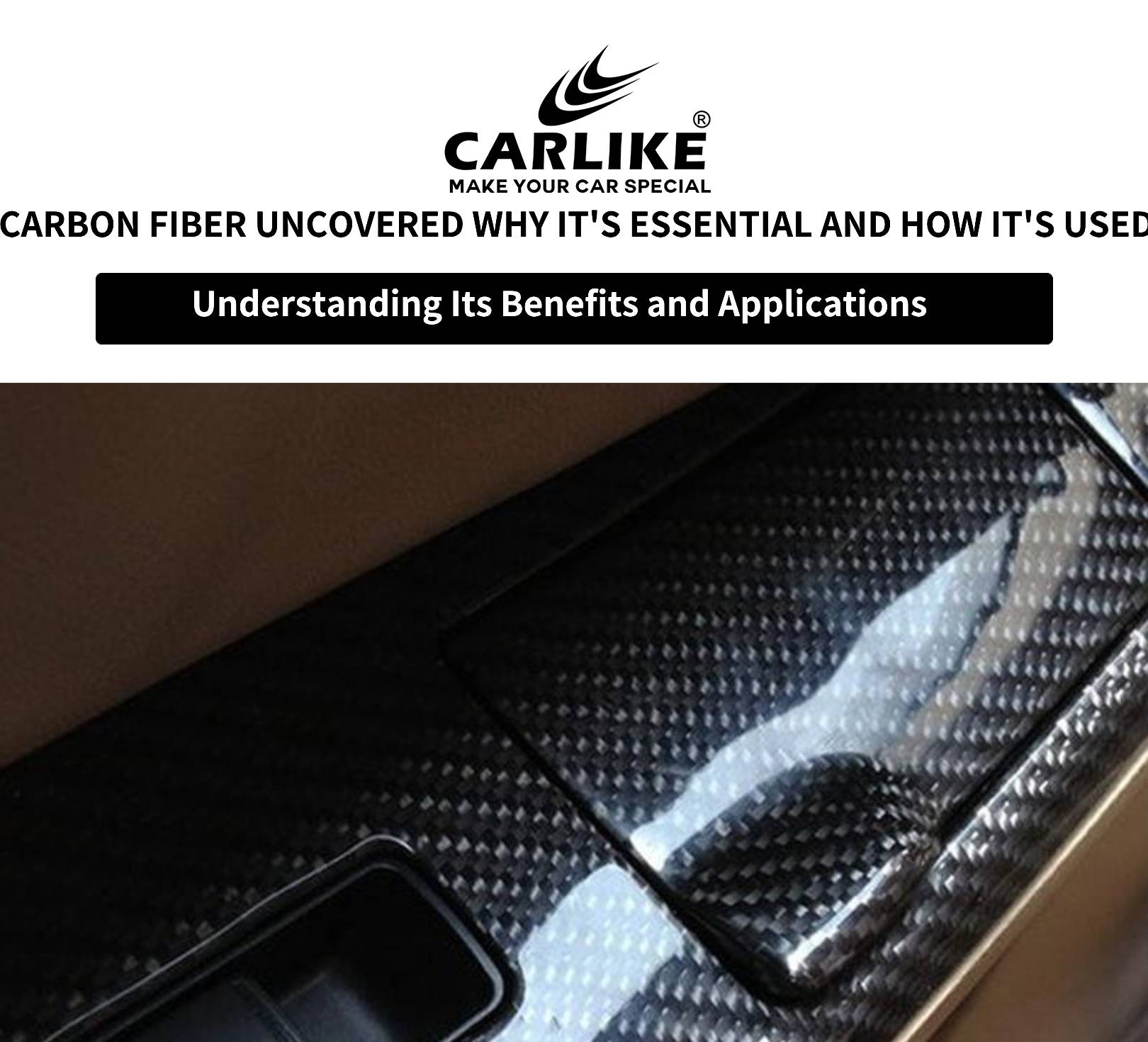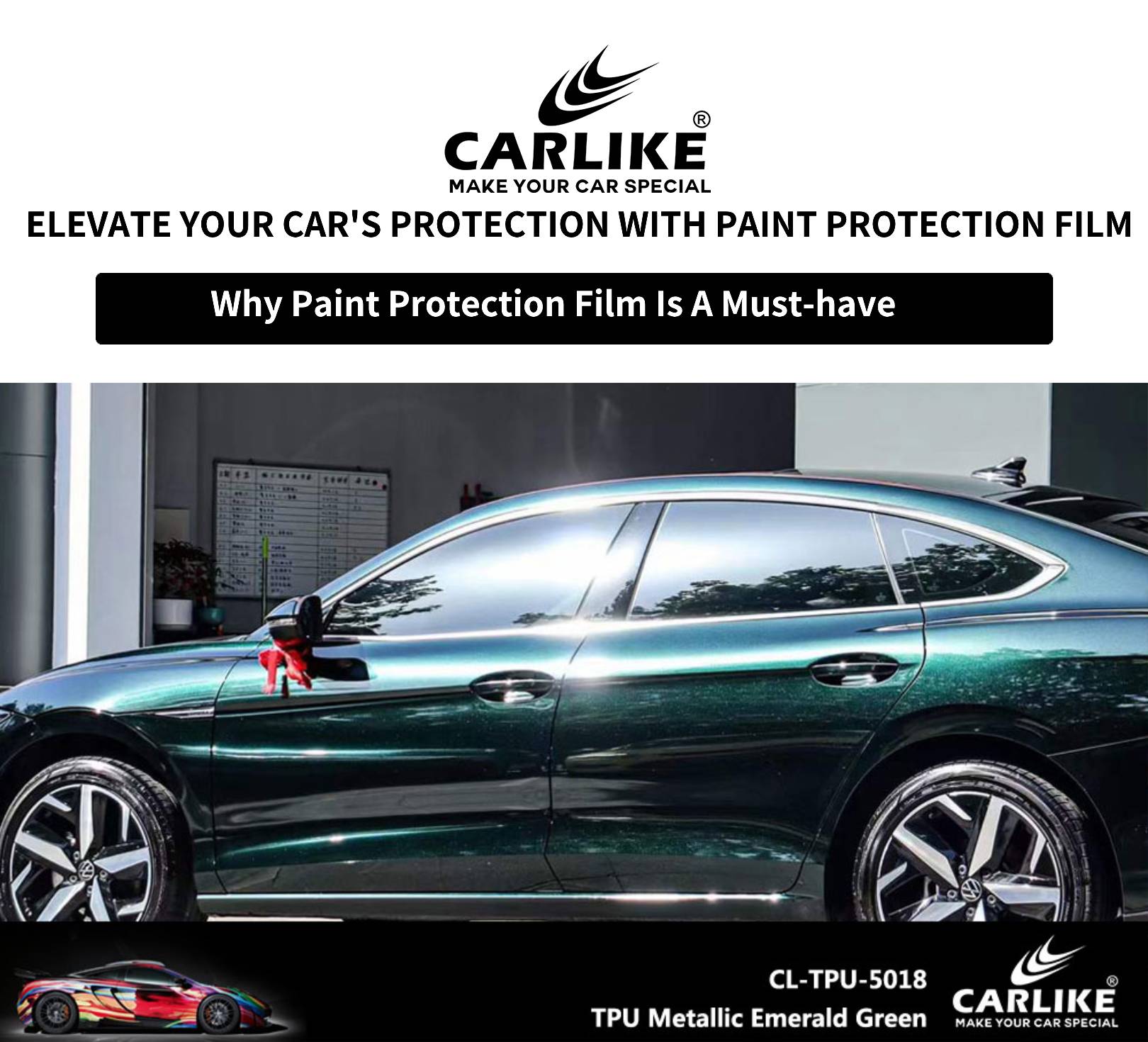This article explores the diverse ways in which weather influences car film and offers insights into how to mitigate potential damage.
CARLIKE-Make Your Car Special.

Weather conditions play a crucial role in determining the longevity and effectiveness of car film. From scorching heat to freezing cold, various weather phenomena can impact the film's performance and appearance. Understanding these effects is essential for both car owners and film manufacturers.
The Role of UV Radiation
UV radiation from the sun is a significant factor influencing the durability of car film. When exposed to UV rays, car film can degrade over time, leading to fading, discoloration, and even peeling. UV radiation breaks down the molecular structure of the film, weakening its protective properties and reducing its lifespan.
To combat the damaging effects of UV radiation, car films are often formulated with UV inhibitors that help block or absorb the harmful rays. Additionally, regular maintenance, such as applying UV-resistant coatings or protective films, can help prolong the life of car film in sunny climates.
Understanding the impact of UV radiation on car film is crucial for car owners and manufacturers alike, as it underscores the importance of selecting high-quality, UV-resistant films and implementing proper maintenance practices to ensure long-lasting protection for vehicles.

Heat and Its Effects on Film Adhesion
Heat can significantly impact the adhesion of car film. High temperatures can soften the adhesive layer of the film, making it more prone to peeling or bubbling. Additionally, extreme heat can cause the film to expand, leading to distortion or warping, especially on curved surfaces. Conversely, very low temperatures can cause the film and adhesive to become rigid, reducing their flexibility and increasing the risk of cracking or delamination. Proper installation techniques and choosing films with temperature-resistant adhesives are crucial for maintaining optimal adhesion in varying weather conditions.

Moisture and Humidity: Friend or Foe?
1. Adhesion Issues: High humidity levels can interfere with the adhesive properties of the film, leading to poor adhesion to the vehicle's surface. This can result in bubbling, lifting, and premature failure of the film.
2. Moisture Trapping: Moisture trapped beneath the film during installation or due to environmental conditions can create a breeding ground for mold, mildew, and other contaminants. This not only affects the appearance of the film but also compromises its structural integrity over time.
3. Fading and Discoloration: Excessive moisture exposure can cause the colors and patterns of the film to fade or change over time. This can result in an uneven or discolored appearance, detracting from the aesthetic appeal of the vehicle.
4. Corrosion Risk: Moisture can accelerate the corrosion of metal surfaces, including the vehicle's paint and underlying structure. Car films act as a barrier against moisture, but prolonged exposure to high humidity levels can compromise this protection, leading to rust and corrosion issues.
5. Delamination: In humid environments, the adhesive layers of the film may weaken or break down, leading to delamination—the separation of the film from the vehicle's surface. This compromises the film's effectiveness in providing protection against scratches, chips, and other forms of damage.
To mitigate the effects of moisture and humidity on car films, proper installation techniques, regular maintenance, and the use of high-quality, moisture-resistant films are essential. Additionally, storing vehicles in controlled environments and using climate-controlled facilities during installation can help minimize exposure to adverse weather conditions.

The Challenges of Extreme Weathers
1. Acid Rain
Acid rain contains pollutants like sulfur dioxide and nitrogen oxides, which can react with the protective layer of car film. This reaction leads to chemical degradation, weakening the film's structure and reducing its ability to protect the vehicle's paint. Over time, acid rain exposure can cause discoloration, fading, and even etching of the film surface, compromising its aesthetics and performance.
2. Hailstorms
Hailstones, ranging in size from small pellets to large chunks of ice, can cause significant damage to car film. The impact of hail can result in tears, punctures, or dents on the film, exposing the underlying paint to potential harm. Even if the film remains intact, the force of hail impacts may weaken its adhesive bond, leading to lifting or peeling over time.
3. Tornadoes
Tornadoes bring extreme winds that can hurl debris such as rocks, branches, and other objects at high velocities. Flying debris can scratch, gouge, or tear the car film, compromising its protective capabilities. Additionally, the force of the wind itself may cause the film to lift or peel off, leaving areas of the vehicle vulnerable to damage from airborne particles.
4. Blizzards
Blizzards often accompany freezing temperatures, snowfall, and strong winds, posing multiple threats to car film. Snow and ice accumulation can exert pressure on the film, potentially causing it to crack or delaminate. Wind-driven snow, ice, and debris can abrade the film's surface, leading to scratches, abrasions, and premature wear.
In summary, extreme weather events such as acid rain, hailstorms, tornadoes, and blizzards can all have detrimental effects on car film. These include chemical degradation, physical damage from impacts, and abrasion from wind-driven debris. Choosing a high-quality, weather-resistant film and regularly maintaining the vehicle's protective coating are essential strategies for mitigating these risks and ensuring long-lasting protection against the elements.


Strategies for Weatherproofing Car Film
- High-Quality Installation: Ensure that the car film is installed properly by experienced professionals. A well-installed film is less likely to peel or bubble, even under harsh weather conditions.
- Choose the Right Film Material: Opt for high-quality, weather-resistant car film materials that are specifically designed to withstand UV rays, extreme temperatures, moisture, and other environmental factors.
- Regular Maintenance: Keep the car film clean and free from dirt, debris, and pollutants by regularly washing it with a mild detergent and water. This helps to prevent the buildup of contaminants that can degrade the film over time.
- UV Protection: Apply a UV protectant or coating to the car film to shield it from the damaging effects of sunlight. This can help to prolong the life of the film and maintain its appearance.
- Heat Management: Use window tint films with heat-rejection properties to reduce the amount of heat absorbed by the car's interior. This not only enhances comfort but also helps to protect the film from heat-related damage.
- Seal Edges: Ensure that the edges of the car film are properly sealed to prevent water, dirt, and debris from getting underneath and causing the film to lift or peel.
- Avoid Abrasive Cleaning Methods: Use gentle cleaning methods and non-abrasive cleaning products to avoid scratching or damaging the car film. Avoid using harsh chemicals or abrasive materials that can degrade the film over time.
- Parking Protection: Park the car in shaded areas or use car covers to protect the film from prolonged exposure to sunlight, rain, snow, and other weather elements when not in use.
- Regular Inspections: Periodically inspect the car film for any signs of damage, such as peeling, bubbling, or discoloration, and address any issues promptly to prevent further damage.
- Follow Manufacturer Recommendations: Follow the manufacturer's recommendations for care and maintenance of the car film to ensure optimal performance and longevity.





